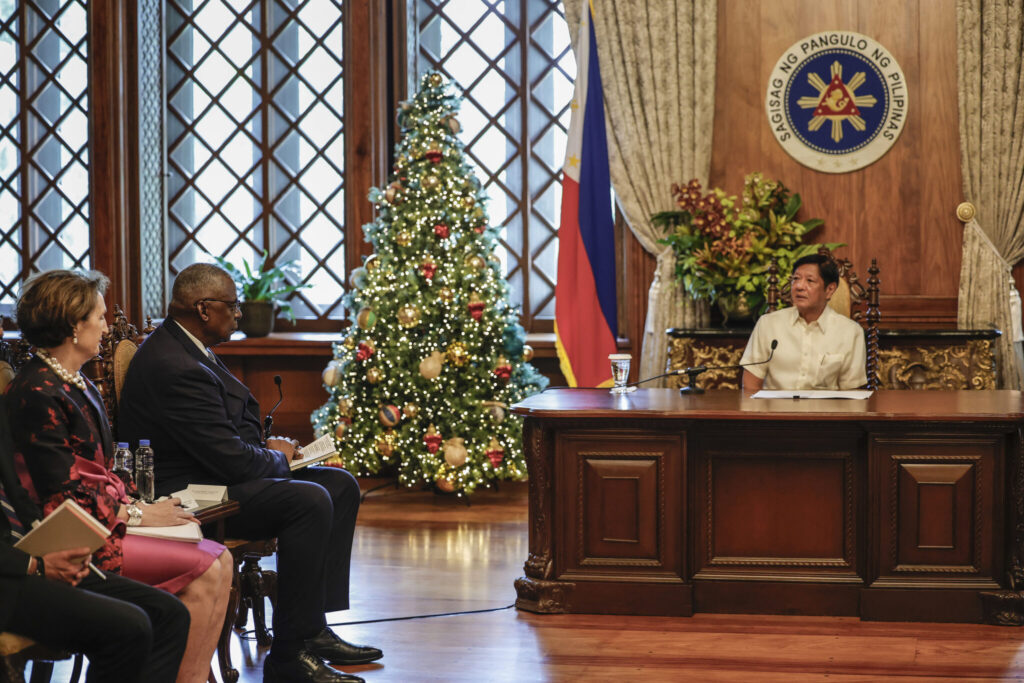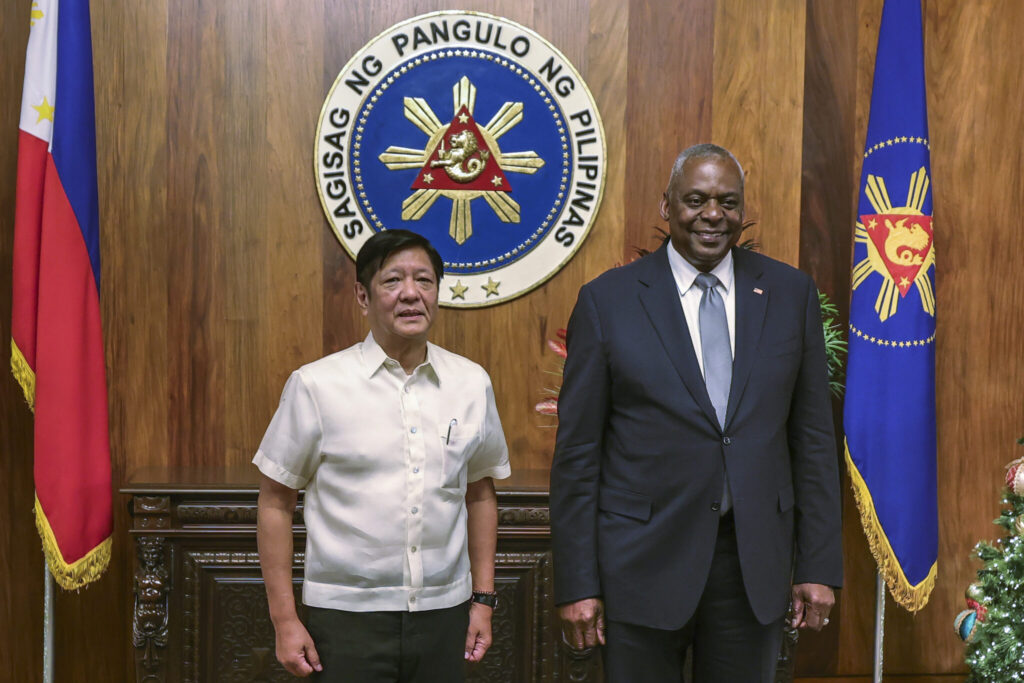US-Philippines pact/ military intelligence agreement/ advanced weapons technology/ China South China Sea/ regional defense cooperation/ Newslooks/ MANILA/ Philippines/ J. Mansour/ Morning Edition/ The United States and the Philippines have signed a landmark military agreement enhancing intelligence sharing and access to advanced U.S. weapons systems. The pact, aimed at bolstering regional security, highlights the nations’ commitment to countering increasing aggression from China, particularly in the South China Sea.

US-Philippines Military Pact: A Strategic Boost in Asia
Key Highlights:
- New Security Agreement: Allows the secure exchange of classified military intelligence and advanced U.S. weapons technology with the Philippines.
- Shared Regional Goals: Strengthens the allies’ ability to counter China’s assertive actions in the Indo-Pacific, including potential threats to Taiwan and the South China Sea.
- Enhanced Military Capabilities: The deal paves the way for the Philippines to access sophisticated systems like missile technologies, satellite surveillance, and drone intelligence.
US, Philippines Strengthen Military Ties with Key Intelligence Pact
Deep Look
Historic Pact Strengthens Alliances
In a significant move to bolster regional security, the United States and the Philippines signed the General Security of Military Information Agreement (GSOMIA) on Monday. The agreement, signed by U.S. Defense Secretary Lloyd Austin and Philippine Defense Secretary Gilberto Teodoro, ensures the protection of classified intelligence exchanged between the two nations.
The legally binding pact is expected to deepen military cooperation and enhance the Philippines’ access to advanced U.S. technologies, strengthening its defense posture amidst rising geopolitical tensions in the Indo-Pacific.
Responding to China’s Aggression
The agreement comes as China continues its aggressive military maneuvers in Asia, particularly in the South China Sea, where Beijing asserts territorial claims contested by the Philippines and other nations.
Both nations have ramped up defense activities, including large-scale joint military drills. The U.S. has also reinforced alliances across the region, aligning with countries like Japan, South Korea, and Australia to create a defensive arc against potential Chinese actions, including over Taiwan.
Enhanced Defense Capabilities for the Philippines
While specific details of the agreement remain undisclosed, Philippine defense officials have revealed that it will enable the nation to access:
- Sophisticated Weaponry: Advanced missile systems previously unavailable due to the absence of a security pact.
- High-Level Intelligence: U.S. satellite and drone surveillance systems, offering critical insights into regional threats.
The lack of such an agreement previously hindered Philippine efforts to secure advanced systems, particularly during the 2017 siege in Marawi, where Philippine forces struggled against Islamic State-aligned militants.
“This agreement ensures we are better equipped for future challenges,” said a Philippine official, requesting anonymity.
New Joint Coordination Center
In addition to signing the GSOMIA, Austin and Teodoro inaugurated a joint coordination center designed to streamline military operations and intelligence sharing.
“This center symbolizes our shared commitment to addressing regional challenges together,” said Austin during the ceremony.
The facility will provide a unified picture of shared threats, enabling seamless coordination between U.S. and Philippine forces.
A Commitment to Peace and Stability
Philippine President Ferdinand Marcos Jr. has emphasized the importance of U.S. support in maintaining peace and stability in the region. Defense Secretary Teodoro echoed this sentiment, highlighting the enduring partnership between the two nations:
“The values of this alliance transcend leadership changes and generations,” said Teodoro.
Strategic Implications
The signing of this agreement marks a critical step in the U.S.-Philippine alliance and sends a strong signal to Beijing about the commitment of both nations to regional security.
As the Indo-Pacific remains a hotspot for geopolitical tensions, the enhanced defense capabilities and intelligence sharing brought by this pact strengthen the Philippines’ role as a key U.S. ally in countering China’s aggressive actions.







